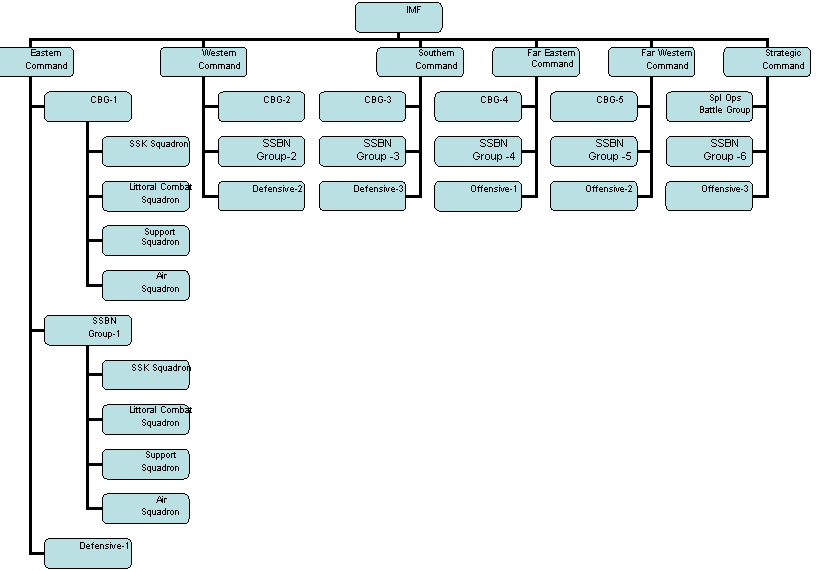By
Pramod Buravalli
At
the moment, The Indian Navy is perhaps the most forward looking and potent
military force in the south East Asian region. Their foray into building a
strong and capable Navy is highly appreciated! With several projects in
various shipyards, naval bases achieving a high level of maturity and
multiple joint initiatives with friendly navies, we are looking at a
maritime force that is truly becoming strong blue water navy.
In
my last article, I talked about an Indian Aerospace Force that is becoming
a necessity for the aerospace spectrum of operations for the Indian
military. In this one, I would like to stress on the relevance of
continued strategic engagements and the need to continue building a very
strong Navy.
An
“Indian Maritime Force”(as I call it) should have the following
main strategic ideals or like they say in naval terms “principal
roles”
incorporated into their doctrine:
-
To be almost indestructible in face of total annihilation
-
To be the diplomatic and good will extending arm of the Indian Nation.
To
completely achieve the above, the following are bare necessities:
-
A
Strong Industrial base backed by uninterrupted material supplies (These
facilities need to be well guarded from internal and external
sabotage/aggression)
-
A
Stable and well trained maritime manpower.
-
A
continuous supply of fuel and weapons (Both are always best produced
internally)
-
Unsurpassed 3rd strike capability in terms of massive and
complete retaliation.
-
Strong Design and Construction teams that constantly come up with
innovative vessels.
-
A
strong Fuel and Weapons centric R & D team. This team should be at the
forefront of inventing new and alternate sources of fuel and ammunition
for the IMF
-
Strategic and deep rooted Buddhist ties need to be established with
China
and
Japan.
-
Full cultural, economic and military ties need to be established with
Srilanka, Myanmar, Thailand, Singapore, Vietnam
and
Cambodia.
-
A
cordial and mutually dependable relationship needs to be developed with
Indonesia, UAE, Malaysia, South Korea
and
South Africa.
-
Friendly relations with
Russia, USA, Europe, Brazil
and
Israel
NEW ORG STRUCTURE 2027
From a numbers perspective, IMF should maintain a minimum of 240 combat
ships and 240 aircraft divided into 6 commands. I have made an attempt to
pictorially represent the structure:

Legend on the chart above
-
CBG : Carrier Battle Group
-
SSBN : Ballistic Submarine Group
-
Defensive Battle Group
-
Offensive Battle Group
-
Special Operations Battle Group
The
required numbers and composition for the Battle Groups:
-
CBG: The IMF will need a standard (Mid Sized) strike carrier of the
40,000 Ton capacity. The current Vikrant class carrier being constructed
at Cochin should be the ideal test bed for future innovations in this
area. This carrier should be powered by dual fuel or an indigenous
nuclear fuel engine. The air complement needs to be a mix and match of
several aircraft forming 2 full squadrons. The escort complement will
invariably have to consist of warships, frigates, and attack submarines
along with supply ships. Overall, the IMF needs 6 carriers to fully
justify the concept for CBG’s.
-
SSBN: The ATV project should be unveiled in the next 2-3 years. A full
complement of 12 ATV’s need to be built over the next 20 years. These 12
ATV’s have to constitute the 6 SSBN groups within the 6 commands
-
Defensive Battle Group: Most of the coastal engagements over the history
of naval warfare have all been about protecting beaches and coastal
territories. The IMF needs to develop a very strong coastal patrol and
interdiction capability with fast attack stealth craft that are capable
of operating in shallow waters. A very strong defensive mechanism needs
to be developed that is networked to the nearest base that is designated
to protect that area. This group should comprise of a large number of
anti ship capable missile boats, coastal aircraft/fighters and numerous
coastal missile batteries.
-
Offensive Battle Group: The most potent and conventional arm of the
battle groups has to be the stealthiest and tactical group of all.
Stealth bombers, battleships, Unmanned combat vehicles/aircraft should
be the mainstay of this force. The LST’s and marine troops invariably
will be the backbone of this group. A minimum of 5 brigades of naval
troops should be trained for this role.
-
Strategic Battle Group: This is meant for special operations, covert
and overt operations. The current MARCOS battalions should be fully
expanded into 2-3 full brigades for naval special ops. The intelligence
arm of this group needs to be fully integrated along with the capability
to launch the last resort weapons in case all fails.
Summary and Conclusion
It
is already known that the new naval bases at Karwar and Vishakapatnam are
going to be the headquarters for the western and Eastern Naval commands.
However, serious efforts need to be made to develop Cochin, Mangalore,
Paradip, and Port Blair into the command headquarters for the newer
commands.
Overseas bases should be established taking the friendly governments into
confidence. Vietnam, Singapore, Myanmar and Thailand will certainly offer
this facility if requested by the Indian government.
Finally, the IMF needs to be the most potent and unpredictable for an
adversary. The IMF ultimately should ensure the survivability of the
Indian Nation at any or all costs.
Pramod Buravalli is Chief Technology
Officer/MD-India @ TechRP Inc,
USA. He may be contacted at
pramodsai@hotmail.com.